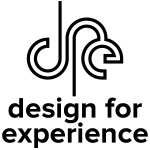When rolling out the Design for Experience award category, Innovative Research Technique, we poined to an article about the virtues of leveraging the Kano Model in design projects.
We’ve also published articles on other novel research techniques like this one re-introducing Page Description Diagrams. These articles serve as a reminfer that while there’s striking consistency in the user research and design techniques employed by practitioners and companies, there are always opportunities to improve existing techniques. There are also altogether new methods being devised that are changing the way we do research.
There’s a certain amount of uniformity to the design tools available to experience designers as well, like those used to create wireframes and prototypes, or interaction design tools like Indigo Studio, which Ambrose Little wrote about in his article “Storyboarding in the Software Design Process.”
With design tools, too, there is room for improvement and innovation. For this reason we’ve broadened the category to Innovative Technique or Tool. This allows DfE to recognize new or improved research techniques as well as design techniques, and design tools that have the strongest potential to affect the quality and success of the design of experiences.
If you’ve recently used any exceptional research techniques or design tools nominate them now! If you’ve been a part of a team that devised a new research technique or a new design tool, apply for this award.
[google_ad:WITHINARTICLE_1_468X60]
Image of blank sticky notes courtesy Shutterstock








